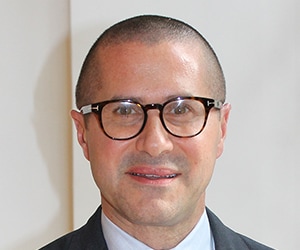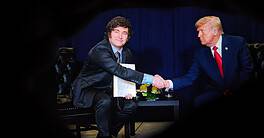Anthony Abbatiello, who leads the global Leadership & Succession business at Russell Reynolds Associates, speaks on succession planning for “chief”-level executive posts—the so-called “C-suite.”

Global Finance: How has the role of a C-suite leader evolved?
Anthony Abbatiello: The C-suite really began in the post WWII era. From then until the 1980s, it was hierarchical; the CEO as the general and a CFO focused on financial results. The 1980s and 1990s brought an era of functional specialists; the CFO drove the financial vertical and built deep expertise in the function. Today calls for a Renaissance-style variety of capabilities, with business a team sport requiring collaboration and inspiration at the top. C-suite leaders set strategy, influence and build teams, and while they may drive a functional specialty, like human resources, technology or finance, they also collaborate and connect on critical issues like sustainability and the future of work.
GF: How has the succession process changed?
Abbatiello: Leading organizations are starting succession much earlier than in the past. We’re seeing C-suite succession projects commencing three to five years out, starting with a contextual analysis of the company followed by assessment of internal candidates, 1-2 years of development and then completing with transition support post-appointment. With shorter CEO tenure, boards need to start preparing for succession almost immediately upon hire.
GF: What are the main issues regarding C-suite talent today?
Abbatiello: Globally, we see three: First, the performance of senior executives and their teams. This includes supporting executives transitioning into new roles, developing gaps identified in the succession process or aligning teams around the strategic agenda. The second issue is preparing executives for growth and change. Not all leaders are created equal, so organizations need to quickly identify the executive who can lead through transformation (e.g., M&A integration) and drive the strategic goals. Lastly, every organization is challenged with identifying the next-generation of C-suite leaders. This calls for the use of predictive diagnostics and tailored development to help quickly identify the next-generation executives and accelerate their readiness to take on the role.
GF: How do you evaluate prospects?
Abbatiello: We use our proprietary Leadership Span diagnostic to evaluate an executive’s ability to set strategy, execute for results, lead teams, influence and build relationships. Modern leaders also need to be innovative and inclusive, so we look for qualities of ambition, interpersonal sensitivity and adaptability. We leverage psychometric analysis, critical behavioral interviewing on experiences and referencing with the executive’s peers, direct reports and managers, to identify anecdotes related to past performance. The best leaders know how to disrupt and when to change vs when to lead.
Digital-era leaders don’t necessarily need to be experts in technology, but they do need an agile way of thinking. Can they process information and initiate an idea faster? Do they have a “get-it-out” or a “get-it-right mentality?” If they’re not wired for risk-taking, getting them to take more risk naturally will be hard. Someone wired for risk-taking can more easily adapt to a new company.
GF: What are the keys to a smooth transition?
Abbatiello: New executives are always judged by colleagues and subordinates against the prior executive—who may have been liked or disliked. People want to know why they took that job, why they left their old job, what their plans are, and what they intend to change. So every new executive needs to invest in a rigorous approach to manage the transition through the first twelve months. The focus of transition is to learn the cultural identifiers of the organization, help executive manage key stakeholders and understand the talent they have. There are influencers in any organization who are not sitting on the executive team but have a big voice; they can really help support or hinder a new leader. At the same time, the environment needs to adapt to this new leader so that everyone is on the same page. This is a delicate balance, but with the right focus, can be managed and will help the executive achieve business goals faster.



